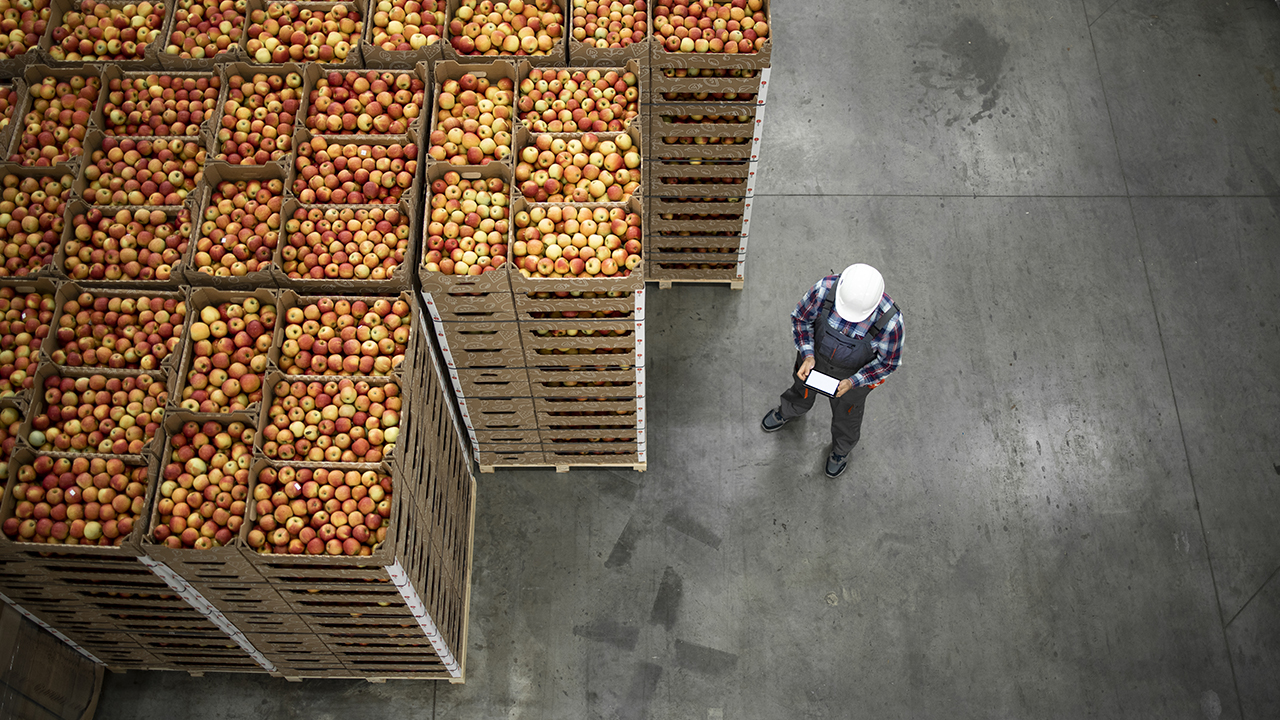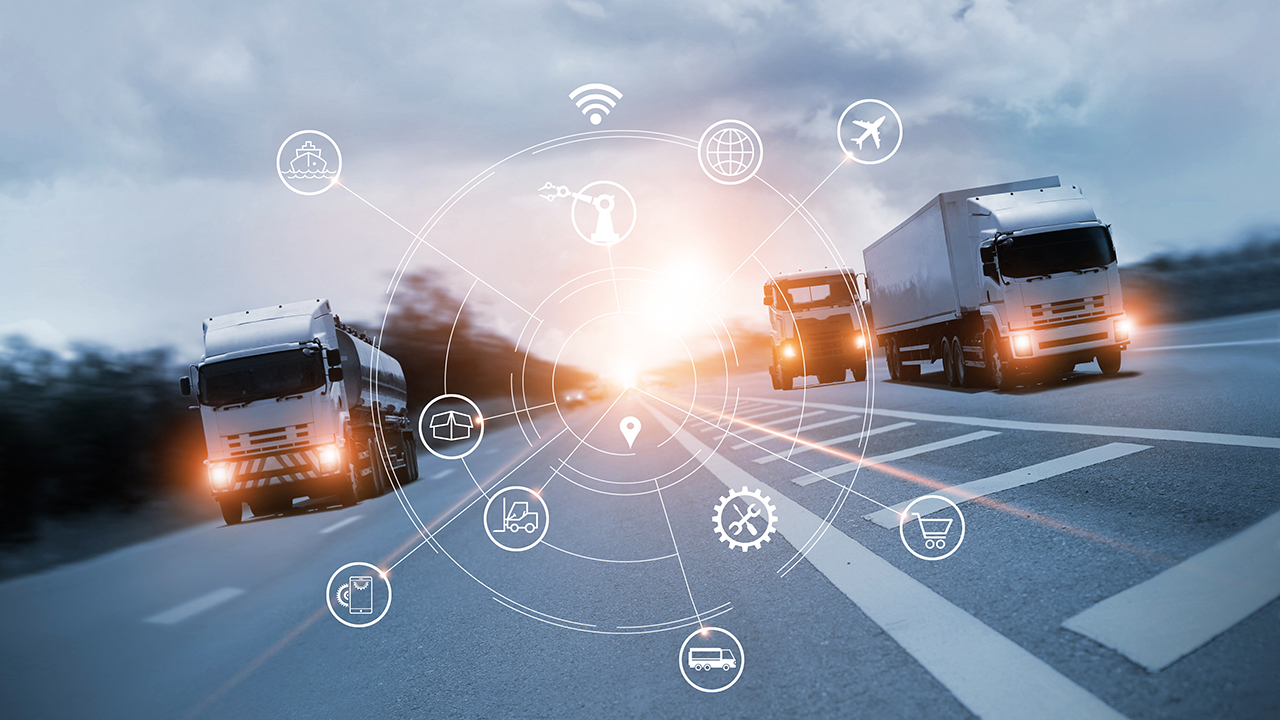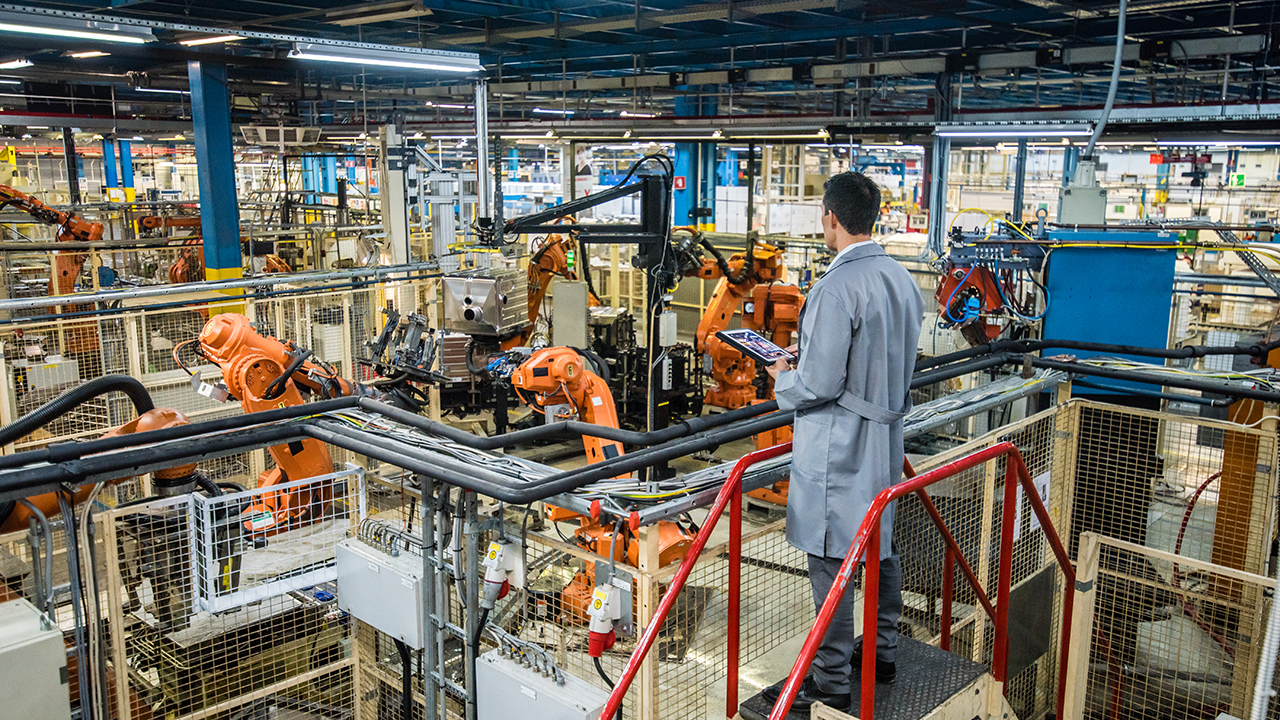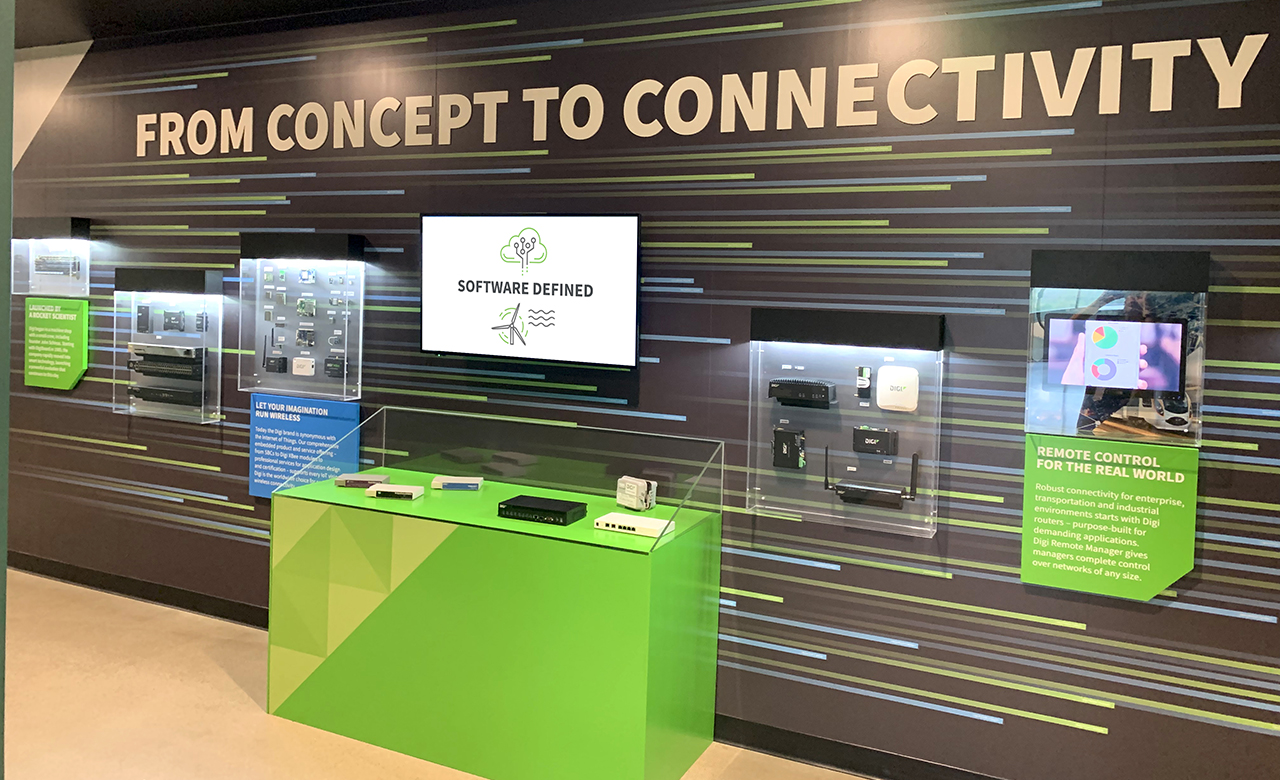IoT 事实上,物流跟踪是最普遍的物联网领域之一。IoT 供应链技术可以帮助从制造到运输和交付的管理人员监控物流,并最终防止关键供应链网络出现瓶颈。
每家公司都希望遵守产品交付期限和季度销售目标,而高效运行的供应链是实现这一目标的宝贵投资。但除此之外,当供应链中出现瓶颈时
关键供应链 (如药品、必需矿物、半导体和大容量电池),这些干扰会对地方、国家和全球经济造成破坏。
在供应链管理中使用IoT ,可以让物流合作伙伴收集和使用数据,以改善库存管理、运输和事故响应。这些功能为使用机器学习模型创建先进、反应迅速的供应管理解决方案奠定了基础,这些解决方案可预测瓶颈、节省时间和金钱,并加快事件响应速度。
IoT 如何改进供应链?

如今,世界各地的供应链 在需求激增中挣扎其中许多问题主要是由于 "工人短缺以及缺乏关键部件和原材料"。尽管 COVID-19 大流行确实加剧了这些持续存在的问题,但它很可能暴露了潜在的问题,而不是根本原因。
在供应链的不同环节--从生产车间到运输和配送中心的库存系统--部署IoT 设备,可提供可视性和数据收集功能。将这些设备连接到 IoT 设备管理平台 集中这种可视性,并在最需要的地方提供实时洞察力。企业可以利用机器学习开发智能供应链IoT ,最大限度地提高供应链效率。
农业、物联网和供应链
 要了解互联网对供应链战略的影响,我们可以首先考虑农业部门。在全球供应链中,农业属于 最复杂的行业 管理和支持。农场、牧场和商业渔场生产的原材料易腐烂,需要加工、包装并迅速运往世界各地。
要了解互联网对供应链战略的影响,我们可以首先考虑农业部门。在全球供应链中,农业属于 最复杂的行业 管理和支持。农场、牧场和商业渔场生产的原材料易腐烂,需要加工、包装并迅速运往世界各地。
每项业务都需要1) 监控、维护和修理专用设备,2) 跟踪波动的需求和市场价格,3) 安排和完成订单,4) 评估经常受外部因素影响的农业产量。
IoT 如何帮助防止出现瓶颈? 农业供应链?
- IoT 设备可以收集运营数据,使农业仓库能够自动进行库存管理并发出供应不足警报。
- 运输易腐食品的车辆需要特定的温度控制,并且必须满足《食品安全现代化法案》(FSMA)的要求 -IoT 应用程序可在容器条件与指定参数不符时发出警报。
- 防止食品损耗可以避免不必要的变质和财务支出,这在供应有限或交货时间紧迫的情况下至关重要。
- 可对智能农业机械进行远程监控,以安排和规划更高效、更具成本效益的设备维护和维修。
利用智能供应链防止粮食短缺IoT
通过减少浪费,在配送和农产品库存管理中使用IoT 还可以限制粮食短缺。研究人员估计,在供应链的收获后阶段,24% 的农产品会受到粮食损失的影响。如今,IoT 和设备管理平台为解决全球粮食短缺问题和提高农产品供应链的可持续性提供了一个前景广阔的解决方案。
IoT 在物流和库存管理中的应用
 库存管理是利用IoT 设备运作和优化供应链各个环节的重要工具。这些系统可确保原材料、产品和货物从生产商到分销商、仓库再到最终用户和客户之间的流通。
库存管理是利用IoT 设备运作和优化供应链各个环节的重要工具。这些系统可确保原材料、产品和货物从生产商到分销商、仓库再到最终用户和客户之间的流通。
的重要性 供应链中的资产管理 库存管理的重要性怎么强调都不为过。如果没有可靠的库存数据,分销商和运输公司就无法确保其复杂的供应链网络正常运行。但是,当供不应求时,我们今天所依赖的网络往往难以做出快速反应。
IoT 如何支持库存管理
- 智能配送中心和仓库可以减少库存管理失误,准确清点原材料和产品。
- 使用IoT 进行仓库管理意味着库存数据实时更新、跟踪可用性并限制无法完成的订单。
- 企业可以部署机器学习模型,从IoT 设备数据中反复出现的模式中学习,优化流程并防止可避免的短缺。
零售库存与圣诞季
在2021 年假日季期间,82% 的零售业高管担心会出现短缺,55% 的零售业高管已准备转向二级供应商。传统的库存管理可能会使这一过程难以快速执行,以满足旺季的高需求。利用IoT 技术,零售店可以在库存达到最低限额时立即向配送中心提交订单。
运输与IoT 和供应链
 无论是用火车车厢、海运集装箱、卡车还是货机运送材料或产品,运输都是将供应链的各个环节相互连接起来的纽带。
无论是用火车车厢、海运集装箱、卡车还是货机运送材料或产品,运输都是将供应链的各个环节相互连接起来的纽带。
IoT 可以改善仓库库存管理,同样,这项技术也可以提高可视性并优化运营。 运输、物流和卡车运输 业。
IoT 如何简化供应链中的运输?
- 产品通常需要通过多种运输方式才能到达目的地。IoT 可以提供实时数据,使物流系统能够更新运输路线,从而最大限度地提高资源效率,加快交付速度。
- 智能运输系统可以利用IoT 数据对路线进行预测分析,找出供应链中经常出现的瓶颈和问题,从而避免这些问题的出现或标记出需要解决的问题。
- IoT 平台可以促进供应商、销售商和客户之间的沟通和信息共享,使运输公司能够了解供应或装运订单的变化并制定计划。
- 运输过程中的温度监控可确保易腐物品在从生产到仓储和配送的整个"冷链"过程中保持安全温度。
洛杉矶港口拥堵
当配送中心和运输枢纽出现拥堵时(如最近发生在南加州洛杉矶港和长滩港的情况),许多配送中心和运输枢纽都没有能力做出反应并实时调整其管理策略。这类事件会加剧当前的产品、零部件和食品短缺,造成资源、工时和危险港口条件的浪费。
从IoT 设备收集到的数据可以为航运集装箱管理策略提供信息,并使人工流程自动化。这将有助于加快卸货速度,缩短集装箱交付、船舶停靠和驶离拥挤港口的时间。
供应链中的机器学习和IoT

正如我们已经提到的那样,IoT 设备的日益普及为应用机器学习来建立反应灵敏的供应链提供了一个令人兴奋的机会。 IoT 和机器学习 这些技术在许多方面相互关联:
- 两者都通过实时数据收集提供价值,通常用于工业、物流、技术、能源和其他行业。
- IoT 设备提供了一种收集信息的方法,而机器学习模型则处理这些数据,提供企业可以采取行动的见解。
- 企业从IoT 和机器学习技术中获得的价值取决于能否获得 5G 网络提供的低延迟、高带宽连接。
- 从IoT 设备和平台收集的数据通常需要通过机器学习模型进行处理,才能获得有意义的结果和见解。
机器学习如何减少供应链瓶颈

随着全球农业、制造业、物流业和运输业的改进和整合,其 IoT 软件和服务此外,机器学习可以利用IoT 数据来预测需求的增加和供应的短缺。无论是作为自动化集成系统的一部分,还是发送需要人工干预的警报,这些功能都能支持更快的决策。
有助于预测未来的瓶颈
 机器学习是一种强大的工具,企业可将其应用于应对最紧迫的运营挑战。 机器学习应用 可以处理海量数据,识别模式,并利用这些洞察力来预测接下来会发生什么。
机器学习是一种强大的工具,企业可将其应用于应对最紧迫的运营挑战。 机器学习应用 可以处理海量数据,识别模式,并利用这些洞察力来预测接下来会发生什么。
当应用于供应链管理时,这些应用程序可创建反应灵敏的供应链,预测并防止未来出现瓶颈。
响应式供应链(利用机器学习构建)的优势包括
- 通过航运路线削减物流和运输成本,最大限度地提高紧急情况下的灵活性。
- 贵重设备的预测性维护和维修计划。
- 根据来自多个系统的数据进行实时决策,防止地域性供应短缺。
- 监控可帮助理解来自整个供应链中成千上万(甚至数百万)IoT 设备的海量数据。
降低成本,缩短响应时间
 有效的机器学习模型可以编译 跨系统共享数据 并利用多种来源的信息获得洞察力。在供应链中,能够根据零售或客户库存、制造工厂的生产时间表、装运跟踪信息等做出数据驱动型决策。
有效的机器学习模型可以编译 跨系统共享数据 并利用多种来源的信息获得洞察力。在供应链中,能够根据零售或客户库存、制造工厂的生产时间表、装运跟踪信息等做出数据驱动型决策。
将机器学习集成到IoT 应用程序和平台中,有助于降低供应链管理的长期成本,并在出现问题时缩短响应时间:
- 利用物流数据规划具有成本效益的运输路线,同时实现交付目标。
- 根据新的供应链情况(如路线受阻、供应短缺或市场价格波动)快速调整订单和交付。
- 应用预测分析技术,规划合适的替代路线,以应对计划外但可预见的路障(如天气、港口拥堵、人员短缺)。
资产管理和维护
 IoT 技术和机器学习还可用于改进农业、制造、分销和物流公司维护和修理设备的方式。
IoT 技术和机器学习还可用于改进农业、制造、分销和物流公司维护和修理设备的方式。
供应链的某些环节几乎始终处于运行状态,因此设备故障或计划外停机可能会造成巨大损失。机器学习和人工智能支持关键的预测性维护要求,使企业能够识别可能导致故障的因素,自动生成服务单,并在导致停机之前解决难题。
整个供应链上的组织都可以利用机器学习应用来:
- 处理数千个数据点,监控和评估设备性能。
- 通过将维护工作和维修安排在预测需求或交通流量较低的时间段,减少设备停机时间。
- 监控、调整或应对超出安全运行参数的设备或环境条件,防止设备故障或工伤事故。
透明监督
 IoT 设备可以帮助企业收集到以前从未接触过的现场数据,但实际上,由于数据的数量、种类和生成速度,往往很难在这些信息变得无关紧要之前加以利用。
IoT 设备可以帮助企业收集到以前从未接触过的现场数据,但实际上,由于数据的数量、种类和生成速度,往往很难在这些信息变得无关紧要之前加以利用。
机器学习可实时了解企业的设备、交付网络、库存等情况。
- 机器学习应用可以帮助处理海量数据,并将其提炼为当前重要的事情、接下来可能发生的事情以及根据这些洞察采取的措施。
- 这种可视性使企业能够快速应对变化,并与供应链供应商、合作伙伴和客户共享实时信息。
- 多个组织可以利用互联系统,依靠基于机器学习的IoT 应用程序,更好地应对对其生产率的直接和间接影响。
- 透明的监控不仅能在组织层面支持供应链管理,还能改善整个行业的功能。
IoT 供应链管理的未来

随着电信供应商建设 5G 网络,在供应链管理中使用边缘计算解决方案将很快使收集、处理和处理来自IoT 设备的数据变得更加容易。这一充满希望的未来将使各种 高级用例 如
- 评估制成品是否存在缺陷或损坏。
- 在供应链的每个阶段验证产品的真实性。
- 为商业实体和消费者提供可共享的供应链网络可视性。
- 建设智能仓库,实现高效库存管理。
- 减少供应链成本、产品和原材料浪费以及运输拥堵。
探索 DigiIoT 解决方案的先进功能

了解当今制造业中的物联网以及技术是如何改变供应链管理的,就能洞察未来的改进方向。IoT 和供应链管理解决方案目前的交叉点并不新鲜--它是技术进步长河中的下一阶段,是行业逐步发展到今天的结果。
但是,许多企业正在实现的飞跃--将其IoT 设备连接到集中管理平台--有望显著改善每个行业所依赖的全球供应链的健康状况和功能。 联系我们 就您的IoT 要求展开对话。或访问我们的网站了解更多信息 DigiIoT 解决方案 和 Digi 控制点解决方案 SmartSense以及它们如何帮助缓解当前的供应链瓶颈。